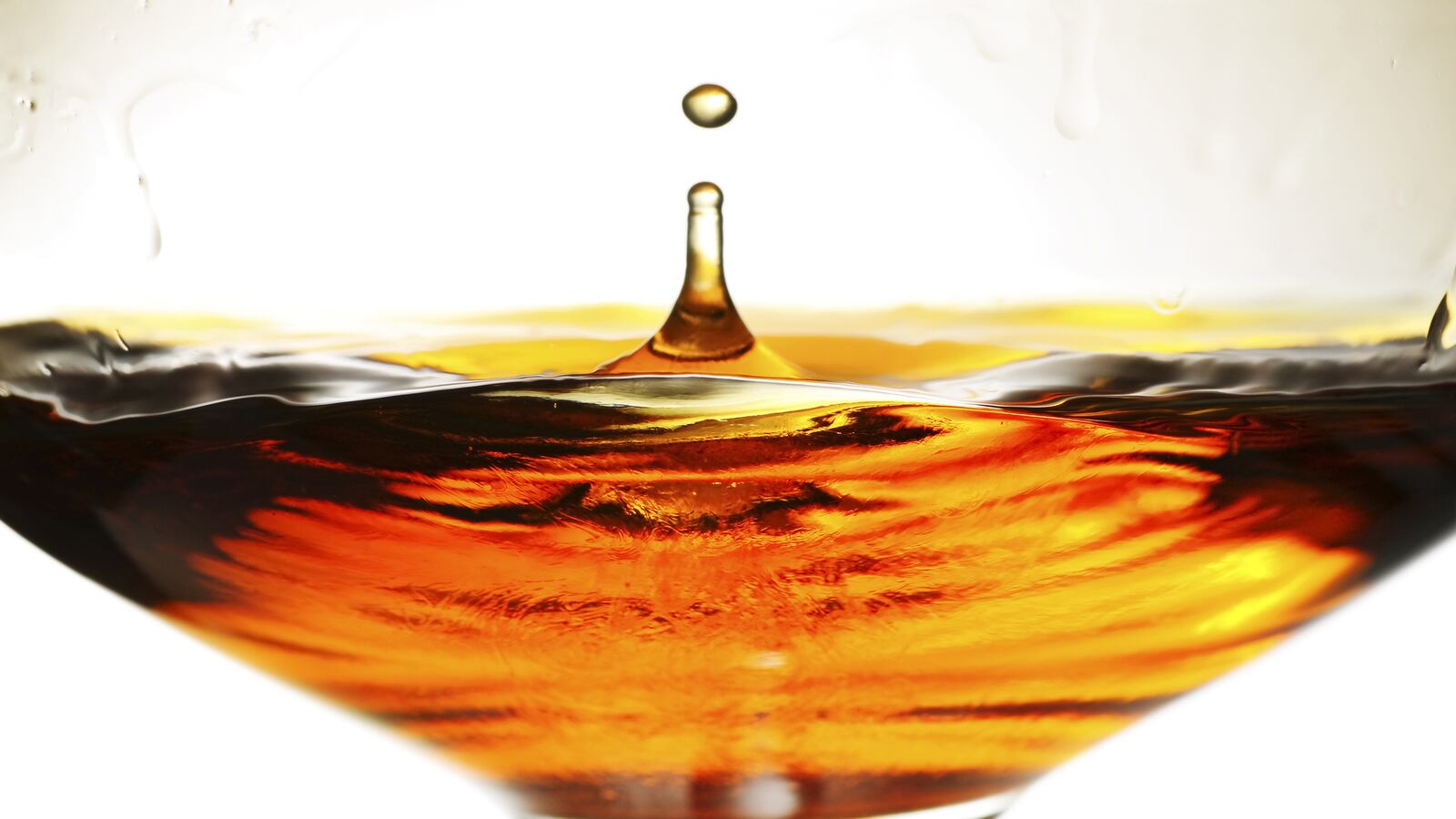The fruit and candy aromas wafting from 14 large oak barrels of aging cherry Luxardo liqueur in the company’s small warehouse in Padova, Italy are impossible to ignore.
After about a year, the liquid in those barrels will be ready for blending and bottled at about 64 proof into a sumptuous maraschino liqueur ready for mixing into the classic Final Word or Aviation cocktails.
At $30 a bottle, it isn’t the cheapest mixer but it’s certainly one of the best.
And in an era of craft cocktails, which are only as good as the ingredients in them, even cordials are coming up a notch—even if consumers have yet to fully give them due respect.
Despite possibly being the largest spirit category, liqueurs are often dismissed as being cheap, subpar liquors, thanks in part to a “race to the bottom” during World War II to compete for American consumers and the lack of easily available, quality domestic products, says Liquid Solutions beverage consultant Philip Duff.
While there are plenty of cheap products on the market (Duff describes them as “Paris Hiltons: pretty to look at but no content”), many traditional liqueurs have hit their stride recently, with flavor profiles that deserve a place on every home bar.
The United States Tax & Trade Bureau, which regulates the sale of spirits, loosely defines the liqueurs as flavored spirits containing at least 1.5 percent by weight sugar, dextrose, and/or levulose, and which is made by mixing or redistilling any spirit with fruits, flowers, plants or pure juices, natural flavoring materials, or extracts from those items.
This rather loose definition has allowed an extremely wide and confusing variety of products to proliferate liquor store shelves.
Duff breaks them down as 1. “range liqueurs,” which is when one brand makes dozens of different flavors (like Bols, DeKuyper or Hiram Walker); and 2. “proprietary liqueurs,” which is one brand that makes one liqueur, often with romantic history (like ginger liqueur Domaine de Canton, pomegranate PAMA, or orange Grand Marnier).
Range liqueurs are typically about selling quantity. You can buy DeKuyper’s 30 proof sour apple pucker for $10. You’ll see lots of seemingly unnatural flavors, like asparagus, white chocolate or even yogurt.
“Certainly some of the range liqueurs are like a research lab,” says Duff, noting that several liqueur brands extract flavors from like materials to achieve the flavor they desire.
“There is a saying in the industry that if you’re using natural ingredients, you’re just old-fashioned. If you imagine a bar graph of a 100 bars going left to right, that would be the entire flavor profile of a strawberry. You can extract those flavors from the strawberry, which may be more expensive, or from other fruits. But they would be the exact same molecules.”
Making liqueurs this way could be cheaper and more sustainable, but “between that and an $80 bottle of proprietary liqueur is a world of difference.”
With the craft cocktail movement in full swing, bartenders seem to be ushering more of these into our repertoires: cordial revenues for super premium brands were up nearly 18 percent last year, while value priced cordial revenues were down 2.5 percent, according to the Distilled Spirits Council of the United States.
There are now hundreds of liqueurs that are categorized by their flavoring agents, whether fruits, nuts, herbs and dairy products.
Quality liqueurs are defined not only by the ingredients they use, but the levels of both alcohol and sugar, which are “transmitters of flavor,” Duff says.
A liqueur lacking adequate sugar tastes awful, and those lacking alcohol resembles flavored simple syrup. At a higher proof, the liqueur can stay open longer without turning bad.
Some liqueurs, mostly in Europe, even have controlled designations of origin that offer authenticity and quality control. Limoncello made on the Amalfi Coast must use lemons that meet strict production standards, while Crème de cassis must be made with a minimum sugar levels in France.
Good liqueur can also be a way of preserving the season’s bounty, since many are made with herbs and fruits at their peak ripeness.
“Instead of putting it into jam you’re putting it into liquid form,” explains Camper English, a cocktail expert and publisher of alcademics.com.
Liqueurs can be made dozens of different ways, some methods and recipes of which date back centuries, when they were made as medicinal ailments.
Luxardo’s maraschino liqueur recipe was created in the late 19th century by Maria Canevari, a homemaker whose husband, Girolamo, saw its business potential.
The recipe, which is still made in the exact way today, resulted in several more products and recognition from the emperor of Austria.
It takes almost four years to make Luxardo maraschino liqueur by first macerating cherry stems, cherries, and herbs for two years in beet alcohol.
Then the solids remaining from the maceration are distilled twice.
The liqueur is aged in oak barrels for up to a year and then blended. It’s a time-intensive process to use real fruits, rather than extracts.
“Maceration is the easiest way to make a liqueur. They are real ingredients, not essences,” says Luxardo’s export manager Matteo Luxardo. “It’s very important for us to use real because we want to give something good to the consumer, something that won’t give you a headache. We’d prefer to spend a little more money and be a little more expensive.”
Similarly, the herbal liqueur Green Chartreuse has been made in France since the early 18th century by monks, who took years to decipher the complicated recipe given to them from the marshal of King Henri IV’s artillery called the “Elixir of Long Life” and eventually spinning it off into Green Chartreuse.
At 110 proof it is far from a wimpy flavored liquor, and only two Chartreuse monks know the dynamic combination of 130 different plants and herbs that go into it.
Green Chartreuse can be drunk on the rocks or with a splash of soda, without tasting cloying or syrupy.
I’d say that’s pretty sweet.






